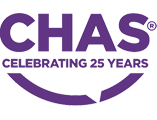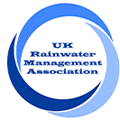How does Rainwater Harvesting help during dry spells?
14/06/2023
Feeling the heat? So are our water supplies. Demand for water supplies during dry spells is extremely high. When rainfall occurs, the water runoff is stored in a reservoir until supplies are required. During dry spells, the stored water is used at a quicker rate than normal. As our weather patterns become more unpredictable due to climate change, the problem of water scarcity is only going to worsen.
There is a common misunderstanding that rainwater harvesting systems become redundant during dry spells, and this is simply not the case. Rainwater Harvesting Systems are helping to make our water supplies more resilient to warmer weather by offering a sustainable alternative supply for non-potable usage in commercial buildings and community housing developments. Capturing and reusing rainwater locally allows potable water supplies to replenish quicker during peak rainfall periods which helps to conserve potable water supplies for when we need them most.
Rainwater Harvesting Systems which have been sized correctly will have a suitable storage capacity to make the most efficient use of local rainfall. Stormsaver systems are sized based on 18 days’ worth of storage which means the likelihood of the rainwater harvesting system using the automatic mains water top up is significantly reduced.

Rainwater Harvesting Systems provide a sustainable water supply for use within a building. Rainwater is captured from the roof area of a building which would have previously been underutilised. The rainwater is then channelled through a pre-tank leaf filter to remove larger debris before entering the main storage tank.
When a demand for sustainable water is detected by the system control panel, sustainable water is drawn through a floating suction filter from the cleanest part of the storage tank.
Sustainable water then goes into a smaller break tank complete with an automatic mains water top up before being processed through the final stage of filtration. A number of filtration options exists, but UV filtration and automatic backwashing is recommended to reduce maintenance requirements and to achieve optimum water quality levels.
Sustainable water is then boosted to points of use. The reused water can be used to for toilet flushing, irrigation, vehicle washing and other manufacturing processes.
Gravity fed – Sustainable water is channelled into a header tank which is located high up within the building. Water is then gravity fed to points of use.
Pressurised – Sustainable water is pumped to points of use via a boosted set.
Combi – All the benefits of the above systems, in one, easy-to-install system.
StormStation – A single unit which houses storage tanks, filtration, controls, and pumps in one ‘plug and play’ unit.
Dependent on the site’s requirements, Stormsaver will recommend the most efficient system to maximise water and carbon savings. Just speak to our team here.

My role as a Water Reuse Specialist means I get to keep up to date with all things water conservation. My favourite water saving tip is to turn taps off when brushing your teeth! I think rainwater harvesting and the water reuse industry is exciting, and I love sharing updates with our customers. View Matt’s Stormsaver profile here.
Terms & Privacy Policy Cookie Policy Site Map
Copyright © 2024 Stormsaver Ltd. All Rights Reserved.





